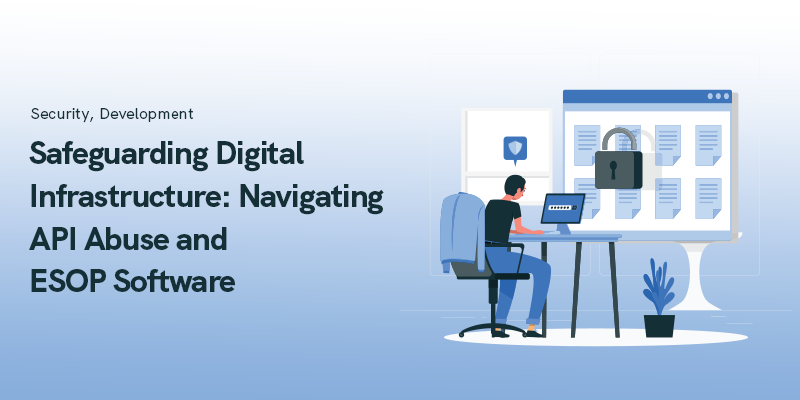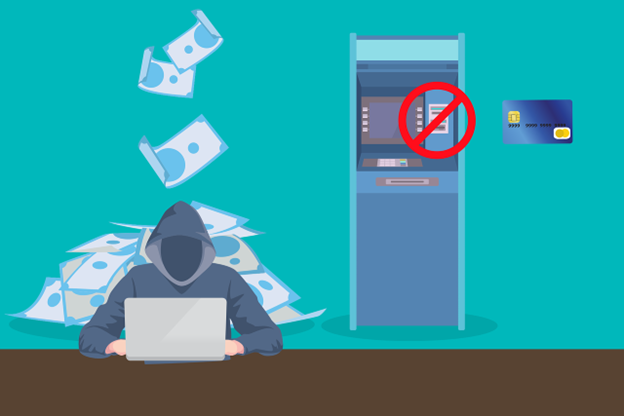
Safeguarding Digital Infrastructure: Navigating API Abuse and ESOP Software
The online world has become such a dynamic place where businesses are continuously facing challenges in protecting their website from API abuse and potential vulnerabilities in their software.
These online threats can ruin your brand reputation and online attackers can get a hold of data they shouldn’t. However, there’s always a way to stop it, and according to the latest cybercrime statistics, online attacks can cost businesses up to $343 billion until 2027.
In this article, we’ll dive deeper into learning more about how we can avoid the risks associated with API abuse and ensure the secure implementation of all softwares you are using.
Securing your Employee share ownership plans (ESOP) implementation
Many businesses will use ESOP software as a compensation scheme to offer to employees. Through the ESOP software, employees get the chance to purchase company shares at a predetermined price, meaning they are allowed to own a piece of the company.
To make sure you are securely granting shares to eligible employees, there are a set of practices you need to follow and they are:
- Deciding how many shares to grant: This decision is made by the board of directors and management team. The decision needs to correctly align with the company’s goals and how much they want the employee to participate in ownership. These negotiations should be made and correctly communicated to the employees.
- Renegotiation: Re-negotiations usually aren’t made, but they might occur if the company’s regulatory requirements and structure change. Also, if an employee is promoted and changes their position, this can occur.
- Showing employees their shares/options status: companies will usually provide their employees with a tool or platform that allows them to check or track their shares and granted options.
The security of your ESOP software will strongly depend on the type of software you are using. A powerful ESOP tool will allow you to monitor vesting schedules, give you a detailed view of the ESOPs created in the business, provide your employees with secondary access, and simplify the steps needed for converting options into purchasing shares at the strike price.
Enterprise Resource Planning (ERP) integrations
ERP ecommerce integration solutions are becoming a popular option for e-commerce businesses. One of the main reasons is that it gives e-commerce businesses a competitive advantage and implements larger security measures that include:
- Removal of replicated and manual data: Integration solutions allow data to be stored in one centralized system instead of having to pass it back and forth, which may duplicate information. A centralized system allows customer and product data to be in a safer place. Moreover, let’s not forget about removing manual data. Manual data brings many more challenges to the e-commerce world.
- Automation: You don’t need to go through data duplicates, meaning you’ll be much more focused and deliver products and services on time.
- Higher data accuracy: Data theft can happen much easier when the data collected isn’t accurate enough. Having the right data allows companies to ensure protective measures better and to identify market trends. Staying relevant protects e-commerce businesses from losing control.
Moreover, let’s not forget about the ERP software functions that assist e-commerce companies in the following:
- Placing orders: An advantage ERP software has is fast order placements, which can quickly add up total product costs and the shipping costs associated with them.
- Price changes: ERP software can simplify functions connected to price changes. It automatically adjusts this information, making sure the company’s data isn’t manipulated and faces losses.
- Inventory changes: Fraudsters can sometimes get a hold of the company’s inventory system and try to manipulate numbers, claiming false purchases. The ERP software integrations will automatically inform customers of the products available and not allow these types of manipulations to occur.
Overall, eCommerce integrations are a gift that removes data duplications, and automatically adjusts order placements, inventory, and price changes. This is to protect your data and to make sure your online business isn’t dealing with manipulations.
Common API cyberattacks to look out for
As we tend to rely on APIs much more, online security has become more critical than ever. Compromised APIs can easily lead to unauthorized system access, data breaches, and more. In order to protect against API abuse you need to have the right API security strategies set up and let’s not forget that it will protect your brand reputation and data from the wrong hands.
Before we dive deeper into learning more about the best practices to avoid API abuse, we need to understand what are the most common types of API cyberattacks.
Exposure of sensitive data
APIs might sometimes expose sensitive data. This includes your passwords, tokens, and other sensitive information you have stored. This can be avoided by encrypting your data, at rest and in transit. Avoid exposing your sensitive data to the wrong logs and URLs at all costs.
Denial of service (DoS)
Sometimes, cybercriminals can overload APIs with requests. This will then block them out completely from legitimate users. In order to prevent this, you can restrict the number of API calls users can make in a certain time frame.
Also, you can use bots to limit incoming traffic to avoid any ‘suspicious’ incoming traffic.
Lack of proper authentication
APIs that aren’t using the proper authentication can easily give out sensitive information to unauthorized users. To stop this from happening, it’s important to avoid exposing sensitive credentials in logs or URLs.
You can do this by implementing an authentication mechanism, and even implementing multi-factor authentications when they are needed.
Top practices you can use for preventing API abuse
74% of businesses reported at least 3 API-related data breaches in the last two years. Most commonly, payment APIs are a primary target for cybercriminals and let’s face it, most of these attacks are programmed to be by bots.
There are only some good bots that will be interested in your APIs, so in most cases, the bad bots are the ones that try to access them. In fact, 73% of all internet traffic is currently comprised of bad bots. A bad bot will launch an attack in the following ways:
- Through reverse engineering
- Using an emulator to run the app
- Using automation software
Common API attacks are usually done through credit card fraud. This results in a huge number of unwilling losses for both consumers and businesses. Therefore, in order to protect your business from API attacks, we came up with a set of practices you can follow for doing so:
Update and patch APIs regularly
APIs are like software, they need to regularly be updated to fix vulnerabilities. Stay updated with the latest patch releases and don’t wait for updates, but do them as soon as you can.
Use API gateways
API gateways serve as checkpoints in flowing data between backend services and clients. The API gateway SaaS protects backend services from invalid requests. You can consider using rate limiting, and set up security policies to keep your API ecosystem safe.
Keep your documents updated
Updating your documents is important for integration with APIs. always update and review API documentation, more importantly, your security protocols. Try to ask for feedback from developers and learn from it.
Conduct regular security audits
Security audits are great for identifying vulnerabilities before they are exploited. You can communicate with third-party security firms to regularly conduct vulnerability assessments and penetration tests.
Incorporate strong authentication systems
You’ve most likely heard of multi-factor authentication (MFA) and two-factor authentication (2FA). They are used as security systems for claiming identities and ensuring that the information isn’t in the wrong hands. MFAs will confirm a user’s identity in the following ways:
- Asking questions: You might have to answer a few questions, enter one-time passwords (OTPs), or even type in a code you’ll get sent to your email or SMS.
- Physical characteristics: This will require you to enter your fingerprint, face ID, or go through iris scanning.
- Showing a proprietary object: This means you’ll need to show a card, token, or anything else that your system recognizes.
MFA and 2FA have been some of the best innovations made to protect your online business from fraud, especially when making payments.
Safeguarding your online business is more important than ever
Online attacks are always out there, and there’s no way to be completely safe from them. Therefore, it’s important to take the right steps in implementing security measures. Moreover, the amount of API abuse lately has been high, so this is something to pay close attention to.
Learning more about the causes of payment API fraud, API abuse, and other fraud attacks that are launched at your online business is a great step toward creating the right strategies for strengthening your API security.
Recommended Posts

Can I Use Java with WordPress in 2024?
July 30, 2024
Understanding Website Content Security Policy in 2024
January 10, 2024



